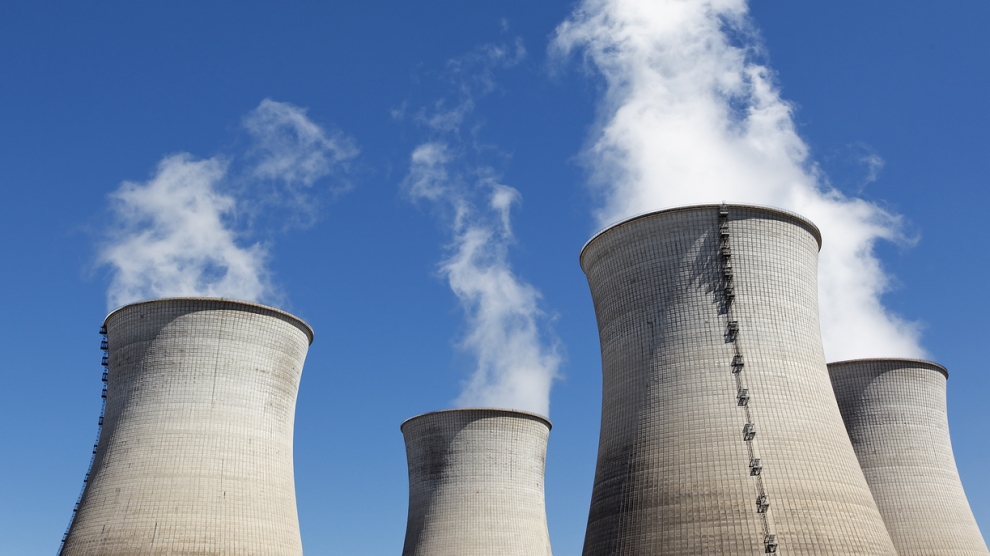Ukraine’s mineral raw material base is under-valued and under-developed. This despite the country being one of the world’s top ten nuclear energy producers and boasting abundant mineral resources crucial for nuclear power. It is one of the world’s leading miners of uranium, and has almost twice as much uranium as the US. Ukraine also has 25 per cent of the world’s reserves of titanium and significant reserves of zirconium ore.
“As a country with such a rich mineral resource base, Ukraine should have a well-developed infrastructure including the one for preparation of deposits for investments. For that to happen, deep and detailed work of new generation geological companies is required—companies that are ready to take the risks of preliminary preparation. We took this risk because we believe that the mining industry of Ukraine is exceptionally investment intensive and attractive,” says Olexander Nastenko, director of Ukrgeoposhuk, a company engaged in the preparation of prospective geological facilities for industrial development.
“We, the representatives of Ukrainian large capital, see the potential of the mineral and raw materials base, power engineering, and industry in general. At the same time, we see a huge underestimation of the country as a whole, as well as of separate industries. This is due to the need for structural reforms. Local capital understands the importance of applying western standards in the mining and energy sector of Ukraine, since even the very transition to these standards increases the capitalisation of the country, and hence of the business here. We are working to ensure that the capitalisation of our country grows, and any investor could feel it,” says Gennadiy Butkevych, chairman of the supervisory board at Nuclear Energy Systems of Ukraine (NESU).
Win-win
With such comprehensive energy potential, Ukraine can become a new growth point for the whole of Europe. The development of the nuclear industry is a win-win for both Ukraine and the European Union. Ukraine will benefit from jobs and investment. The EU will have an opportunity to diversify its energy imports from oil and gas to a universal end-product — reliable, stable and clean nuclear energy.
Nuclear power plants already supply more than half the energy needs of the country, and this is only set to increase. According to Vitaliy Yakimenko, head of R&D at NESU, “Ukraine’s advantage is its scientific and technical base and NPP [nuclear power plant] personnel training system, which is impossible to recreate in the short term. Ukraine’s scientific potential in the nuclear industry in the long term may become our export potential, since we can export knowledge and developments.”
“Nuclear energy can and should become one of Ukraine’s main points of economic growth,” adds Vitalii Demianiuk, chairman of the supervisory board at NT-Engineering, a company specialising in nuclear safety. “To do this, the industry must go through a qualitative modernisation with the use of innovative technologies, including new types of reactors that will replace the old ones. And then Ukraine will be able to become a key electricity supplier to Europe. We will be able to replace the EU’s hydrocarbon flows with our electric flows.”
Small modular reactors
Plans have been drawn up to expand and modernise all sectors of Ukraine’s nuclear industry: development of raw materials, fuel supply, production of equipment and introduction of new nuclear technologies. The latter refers to a new type of reactor—small modular reactors (SMR), which are prioritised in the US and the EU, where SMRs are being licensed and prepared for implementation. Ukraine has successfully blended into this trend.
Innovations in Ukraine’s nuclear power industry will be implemented both by the state and by private business. Energoatom, Ukraine’s national nuclear operator, supports the replacement of its fleet of Soviet reactors for SMRs. As such, in February 2018 Energoatom and Holtec International signed an agreement that envisages Ukraine adopting SMR-160 technology to meet its projected needs for clean power. Ukraine may also become a manufacturing hub for SMR-160 components and systems. In May 2018, a memorandum on the implementation of the SMR-160 project was signed with NESU.
“I applaud Ukraine’s industrialists for their entrepreneurial spirit to coax valuable metals needed to generate nuclear power,” says Dr Kris Singh, president and CEO of Holtec International. “Ukraine is second only to France in the share of nuclear in its energy mix. Thanks to its highly trained pool of engineers and scientists, Ukraine is capable of replicating its nuclear plants to increase the share of nuclear. Holtec International is working with Ukraine’s leadership to introduce our safe SMR-160 reactor technology and to help develop it into a regional hub for building, operating and exporting them. Establishing a domestic supply of needed metals for the nuclear power cycle should be viewed as an essential element of the nation’s strategic plan.”
Ukraine expects to start supplying electricity to the EU network as early as 2019 via the planned ‘energy bridge’ linking its power grid to Poland and Hungary. In 2017 the national energy company also signed an agreement with ENTSO-E, the European Network of Transmission System Operators, to connect to the networks of 34 European countries by 2025, thus entering a huge transnational energy market.


[…] Ukraine’s untapped nuclear potential Emerging Europe […]